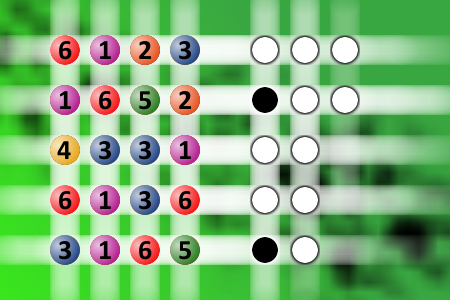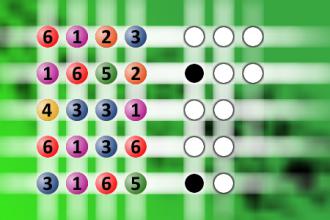What a winning combination?
The computer chose a secret code (sequence of 4 digits from 1 to 6). Your goal is to find that code. Black circles indicate the number of hits on the right spot. White circles indicate the number of hits on the wrong spot.Correct answers: 14
#brainteasers #mastermind

Potatoes!
One night there was three fugitives escaping from jail. One was blonde, one was brunette and the other was a red-head. They had the police hot on their trail and quickly thinking the brunette points out an old, abandoned factory perfect for hiding in. When all three were inside the red-head, quickly thinking said they should all hid in old potatoe sacks in the corner as they could hear the police approaching the factory. They all got in their little potatoe sacks and barely a minute later the police came crashing through the door. They looked at the sacks and said 'Hmm maybe they are hiding in these' The officer kicks the Red-head's sack and she makes whimpering noises. 'Hmm just puppies in that sack' The officer kicks the Brunette's sack and she makes mewing noises. 'Hmm just kittens in that sack' He says. He finally kicks the blonde's sack and he hears....
'POTATOES POTATOES!'

